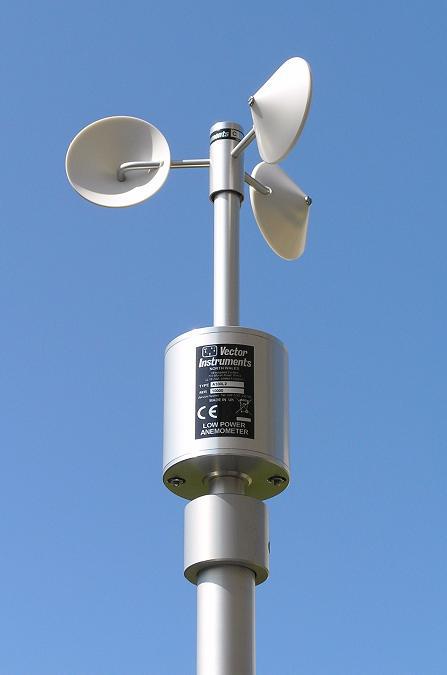Contrasting Digital and Mechanical Anemometers: Which is Right for You?
Contrasting Digital and Mechanical Anemometers: Which is Right for You?
Blog Article
Anemometers Introduced: Recognizing Their Significance in Ecological Surveillance and Precaution
The role of anemometers in ecological surveillance and safety and security steps is usually undervalued, yet their value is obvious. From weather forecasting to air travel safety, anemometers play a vital function in supplying exact information that educates decision-making processes and enhances general safety.
Background of Anemometers
The advancement of anemometers can be traced back to the old human beings where basic wind determining devices were first made use of. These very early wind dimension tools laid the foundation for the development of a lot more innovative anemometers over time. Among the earliest known anemometers was the hemispherical cup anemometer created by Leon Battista Alberti in the 15th century. This layout included 4 hemispherical mugs that collected wind energy, offering a measurement of its strength based upon the speed of turning.
In the 18th century, the popular scientist John Thomas Romney Robinson introduced the Robinson anemometer, which featured four hemispherical mugs installed on horizontal arms that prolonged from a main axis. This style ended up being a criterion in atmospheric dimensions because of its accuracy and dependability. For many years, innovations in innovation brought about the advancement of more contemporary anemometers, consisting of ultrasonic anemometers and laser Doppler anemometers, supplying enhanced accuracy and efficiency in measuring wind rate and instructions. The background of anemometers showcases a remarkable trip of advancement and progress in the field of weather forecasting.
Kinds Of Anemometers
Throughout the area of weather forecasting, different kinds of anemometers have been developed to properly gauge wind speed and instructions. Sonic anemometers utilize ultrasonic signals to determine wind rate and instructions properly. Hot-wire anemometers run based on the concept that the cooling effect of wind on a heated cord is proportional to the wind rate.
Applications in Meteorology
Having reviewed the various sorts of anemometers made use of in weather forecasting for determining wind rate and instructions, it is important to explore their useful applications in the area. Anemometers play a crucial duty in weather forecasting by supplying real-time and precise information on wind problems (anemometer). Meteorologists utilize anemometers to check wind rate and direction to anticipate climate patterns, issue warnings for serious weather events like tornadoes, tornados, and typhoons, and assess atmospheric conditions for air travel safety
In weather forecasting, anemometers assist in comprehending regional and regional wind patterns, my website which are essential for forecasting climate changes and determining climatic fads. These devices are additionally utilized in research study to examine microclimates, city warm islands, and air pollution diffusion. Additionally, anemometers are employed in agriculture to enhance crop management methods, such as watering and chemical application, based on wind problems.
Value in Air Travel Safety And Security
An integral aspect of making sure aeronautics safety hinges on the careful monitoring of wind conditions utilizing anemometers. Anemometers play an essential role in air travel by offering real-time data on wind rate and instructions, helping pilots in making educated decisions throughout trip, take-off, and landing. Solid and uncertain winds can dramatically influence airplane procedures, making it vital for air travel authorities to depend on accurate wind measurements to ensure the safety of passengers and team.

In the dynamic atmosphere of aeronautics, where even small adjustments in wind speed and instructions can have profound results, anemometers stand as indispensable devices for advertising safe and safe and secure flight.
Function in Environmental Research
Anemometers play an essential function in environmental study by providing important data on wind rate and instructions. By properly measuring wind characteristics, anemometers aid scientists analyze the motion of toxins in the air, analyze the impact of industrial discharges, and forecast the spread of contaminants in the environment.


Conclusion
In final thought, anemometers have played an essential function in ecological surveillance and safety and security steps. Recognizing the value of anemometers is necessary for properly gauging wind speed and direction, which is essential for anticipating climate patterns, ensuring risk-free air travel procedures, and performing ecological studies.
One of the earliest well-known anemometers was the hemispherical mug find out here anemometer created by Leon Battista Alberti in the 15th century. Over the years, improvements in modern technology led to the growth of even more modern-day anemometers, including ultrasonic anemometers and laser Doppler anemometers, using raised precision and effectiveness in measuring wind speed and direction. Hot-wire anemometers operate based on the concept that the cooling effect of wind on a heated cable is proportional to the wind rate. Meteorologists make use of anemometers to monitor wind rate and instructions to forecast climate patterns, issue cautions for extreme weather events like cyclones, tornados, and hurricanes, and evaluate atmospheric problems for aviation security.
Recognizing the importance of anemometers is important for properly measuring wind speed and instructions, which is vital for predicting weather condition patterns, making sure secure aviation operations, and carrying out ecological studies. (anemometer)
Report this page